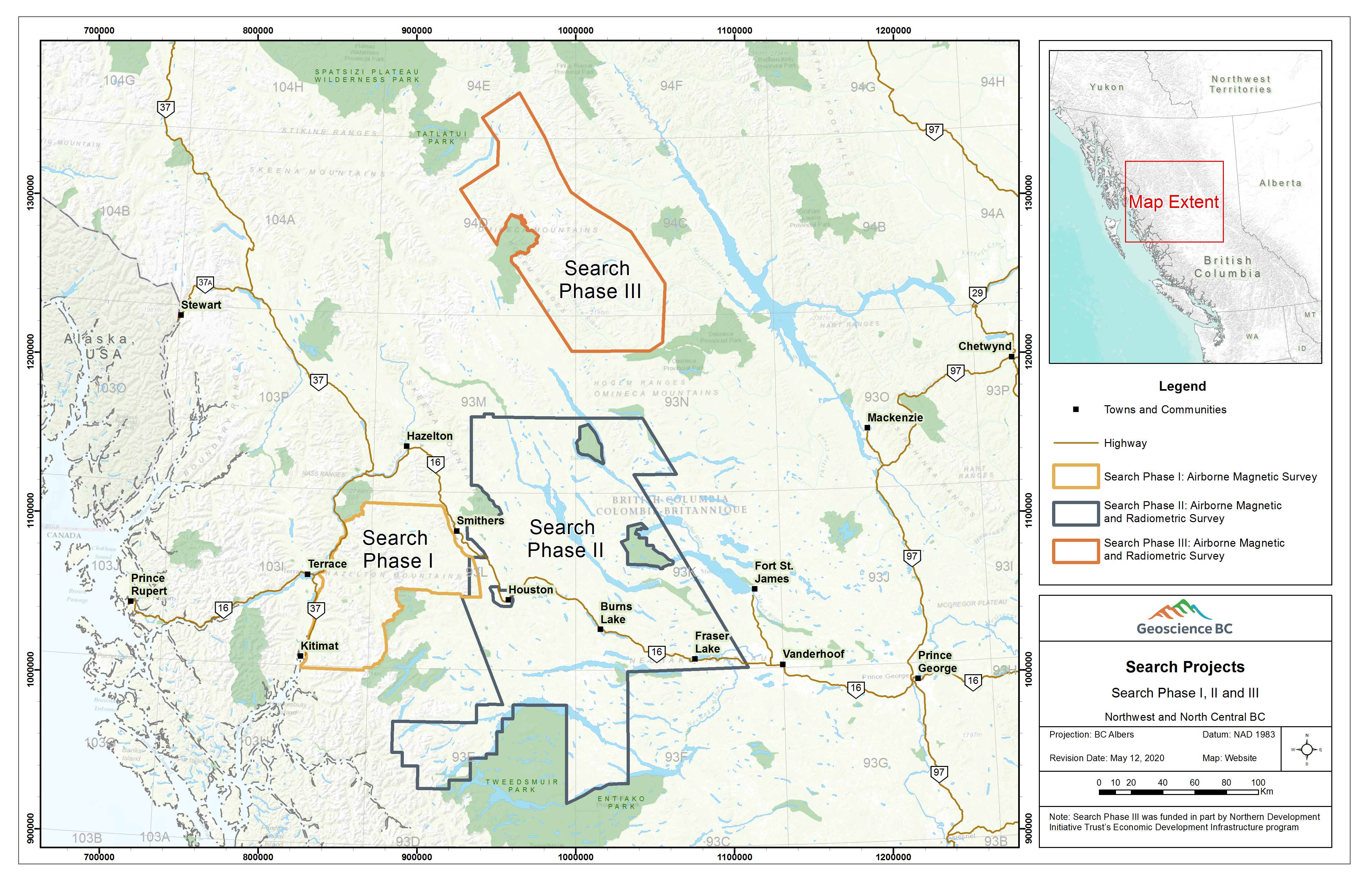Benefits
Public, high quality and independent earth science generated by Search helps attract mineral exploration investment to the province that creates jobs and builds diverse, sustainable communities.
Modern, up-to-date survey data helps companies and individual mineral explorers decide where to focus their mineral exploration activities. This, in turn, helps stimulate regional economic activity through the procurement of local goods and services. Regional magnetic surveying had not been conducted on some portions of the Search area since the 1960s. Technology and accuracy has improved significantly since then.
Data generated from the Search program can be used to help Indigenous groups, regional districts, governments and local communities to understand potential mineral resources in their area to make informed resource-management decisions and to attract investment.
Long-term demand for the minerals and metals that programs like Search help to identify is forecast to grow because they are important for production of items such as batteries, everyday electronic devices, wind turbines and solar panels.
